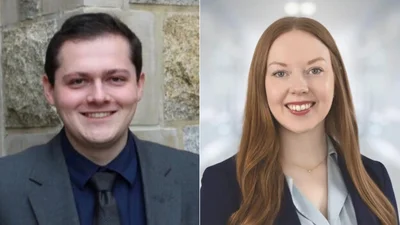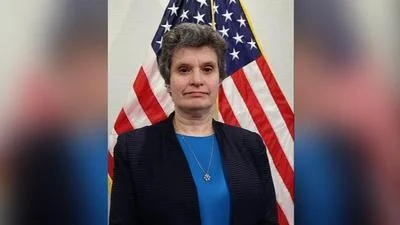The Congressional Record is a unique source of public documentation. It started in 1873, documenting nearly all the major and minor policies being discussed and debated.
“PERSONAL EXPLANATION AND STATEMENT REGARDING SOUTH SUBURBAN THIRD AIRPORT” mentioning the U.S. Dept. of Transportation was published in the Extensions of Remarks section on pages E653-E654 on April 26, 2001.
The publication is reproduced in full below:
PERSONAL EXPLANATION AND STATEMENT REGARDING SOUTH SUBURBAN THIRD
AIRPORT
______
HON. JERRY WELLER
of illinois
in the house of representatives
Thursday, April 26, 2001
Mr. WELLER. Mr. Speaker, I was unavoidably detained in Springfield, Illinois on April 24, 2001 in order to testify on the merits of the proposed South Suburban Third Airport before the Illinois House Aviation Committee. As a result, I was unable to cast votes for Roll Call votes numbered 85 and 86. Had I been able to be present for votes, I would have voted nay on Roll Call vote number 85, the Motion to Instruct Conferees on H. Con. Res. 83, The Congressional Budget for Fiscal Year 2002. I would have voted yea on Roll Call vote number 86, on motion to suspend the rules and pass H.R. 428 as amended, concerning the participation of Taiwan in the World Health Organization.
Mr. Speaker, I missed these votes because I believe that the development of the South Suburban Third Airport is vitally important to Illinois economy and the Nation's aviation infrastructure. I testified in support of developing the proposed South Suburban Airport and Governor Ryan's appropriation request of $15 million for land acquisition. If the State of Illinois is to remain economically competitive, the air capacity must be increased. Governor George Ryan's decision to move forward with land acquisition shows bold leadership to achieve both.
Seventeen years ago, the Federal Aviation Administration ordered the States of Illinois, Indiana, Wisconsin, and the City of Chicago to evaluate the region's future aviation needs and to determine possible solutions. The Chicago Area Capacity Study was formed by Illinois, Indiana, Wisconsin, and Chicago to look for a new site. That study concluded in 1988 that Chicago needed a supplemental airport to relieve overcrowding at O'Hare and Midway. Subsequent studies found there was a need for additional capacity by the year 2000, and that the supplemental capacity should be located at a new South Suburban Airport.
As we now know, the results of that study accurately foretold the future. In 2000, Chicago hit aviation gridlock as the runways, airspace and ground transportation network near the airports reached capacity. Today, peak travel times to and from O'Hare and Downtown often exceed one hour. Remote parking access to or from the terminals can often take 35 to 45 minutes.
The gridlock at O'Hare and Midway not only affects Chicago and its suburbs, but the entire state and nation. When air capacity is limited, airlines focus on the most profitable routes (international route) and ignore less lucrative business (short-range domestic routes). As we have seen, the process of dumping short lower-profit flights in favor of long, higher profit ones has already begun at O'Hare. In the past two years, O'Hare eliminated service to 13 Midwestern markets, but added service to more than 20 foreign cities. This shift has hurt the downstate Illinois economy and limited transportation options for its residents.
Chicago's capacity problems are well-documented. Numerous studies, including ones by the USDOT, the FAA, IDOT and the City of Chicago, conclude that Chicago needs new runways. The question is where.
The Greater Rockford Airport was once considered a possible third airport site. While Rockford is very important to the northern Illinois area, the Illinois Department of Transportation eliminated it as a third airport site in the 1988 study for the following reasons: It was deemed to
Gary Indiana Municipal Airport also has been considered. However, Gary has very little room to grow. Expanding Gary to a size comparable to the Peotone site would require relocating the Indiana Tollway, the Calumet River, 47 miles of railroads, 1,000 acres of wetlands, several toxic landfills, and about 24,000 residents. The $20 billion cost of expanding Gary would make it virtually impossible for an airline to charge reasonable fares, whereas, the cost of the Peotone site would result in ticket prices comparable to O'Hare.
The Proposed South Suburban Airport would be safer due to its parallel-runway design and ability for future growth. Further, the South Suburban Airport is less expensive than other options. The cost of an inaugural South Suburban Airport is approximately $560 million, compared to $1.5 billion for building one runway at O'Hare. The third airport can also be built sooner than adding an additional runway at O'Hare. The airport can be operational in 4 to 5 years, but it would take 8 to 15 years to design and build an additional runway at O'Hare. The South Suburban Airport would be cleaner than the existing airports as it would be sufficient in size to absorb noise and air pollution. It has road and rail access, but less ground congestion.
Mr. Speaker, I appreciate the opportunity to clarify why I missed Roll Call Votes on April 24, 2001 and to further explain the importance of the proposed South Suburban Airport.
____________________








